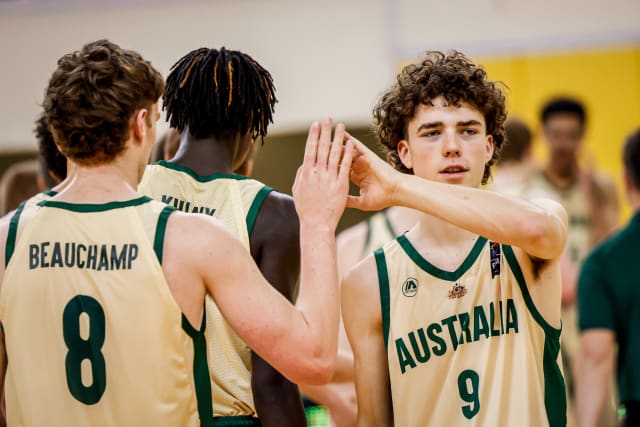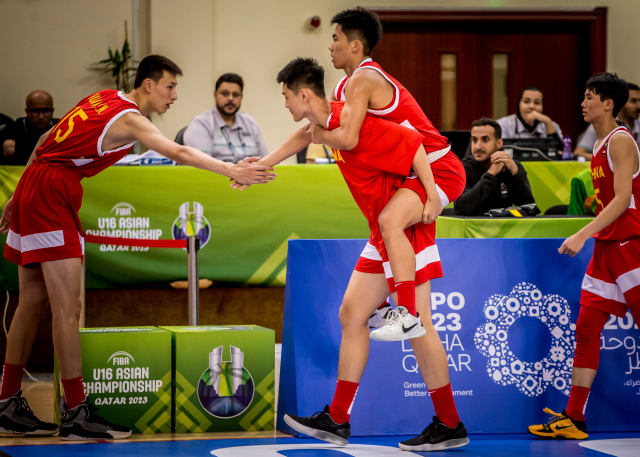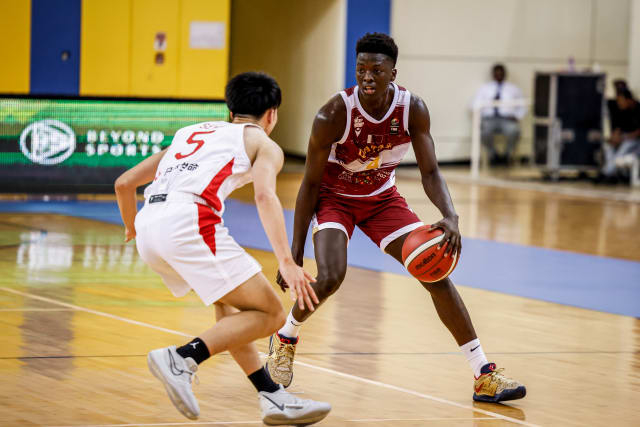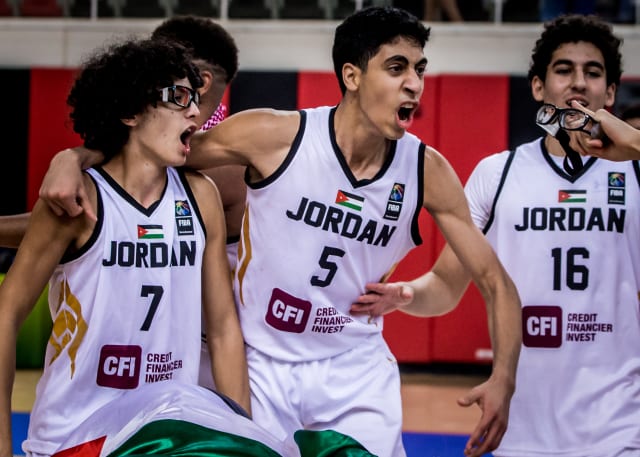Five takeaways from the Group Phase of U16 Asian Championship 2023
DOHA (Qatar) - Before we move on from the Group Phase, here are five takeaways worth taking into consideration!
DOHA (Qatar) - Now that the Group Phase is done at the FIBA U16 Asian Championship 2023, we're ready to head into the next stage of action from the brightest young stars in Asia and Oceania.
Before we move on, here are five takeaways from the Group Phase worth taking into consideration!
1. Crocs still dominating. Are they the best ever?

Australia's undefeated streak playing in the U16 Asian Championship is now extended to 14 straight games. Even though they are still not even halfway to matching China's 31-game win streak in the competition that spanned from 2009 to 2015, they've been playing with the confidence of a team that feels like they'll be able to do so at some point in the future.
The interesting question, however, is whether this can be the best Crocs team to have played in the U16 Asian Championship ever.
| Year | Points Scored / Game | Points Allowed / Game | Average Margin | FG% | Assists / Game |
| 2023 (Group Phase) | 120.3 | 39.7 | 80.7 | 59.3 | 34.3 |
| 2022 | 95.8 | 52.0 | 43.8 | 49.9 | 20.2 |
| 2018 | 87.6 | 57.4 | 30.2 | 46.6 | 18.1 |
The 2022 Crocs were already superb and improved on the 2018 version of the team in the event, but so far in this competition, the 2023 Crocs have been even better. They are efficiently scoring and passing at a historic rate while nearly doubling their previous margin of victory compared to the previous edition.
The numbers will surely dip as the competition gets more intense from the Quarter-Finals onwards, in which Australia have secured direct qualification, but it's still a strong sign - and a scary one for their opponents.
2. China are doing it all, inside-out
China have been back to their dominating ways as well, putting up strong performances in the Group Phase with three straight wins.

They are taking care of business in the paint, as expected from a team that has the second-tallest roster on average (1.96M - 6'5") and has three players who are already 2.08M (6'10") tall. It's especially had a positive impact on the defensive end. China are only blocking 4.3 shots per game, but they are holding opponents to only 31.1 percent shooting from the field - the best in the competition.
Meanwhile, their perimeter shooters are doing their part, making 9.7 three-pointers per game on 36.3 percent shooting - both the best in Qatar.
3. Ndao is producing at a historic rate

Last year, we were wondering if Iran's Mohamad Amini could end up as the best scorer in the history of the competition after averaging 27.0 points per game at the end of the Group Phase. He ended up with 22.8 points per game - which is still pretty awesome - but instead, it was MVP Yuto Kawashima who ended up claiming the record by posting 26.6 points per game all the way to the Final.
That record will be challenged again this year as Mohamed Massamba Ndao is currently putting up 27.0 points per game for Qatar. That is obviously more than enough to lead the competition among all players, which he is also doing in the rebounding department with 14.3 rebounds per game.
Ndao's potential historic campaign does not end there. He's also posting an average EFF of 34.3 with at least 30 EFF in each of the first three games. So far, that is easily the highest average ever in the competition since the statistic was officially archived (2015) - smashing through Karim Zeinoun's average of 26.1 EFF eight years ago.
His 40 EFF game against Saudi Arabia was also the highest in the competition since Jae Min Yang's 42 EFF output against Lebanon in 2015.
Ndao has his eyes set on playing in the World Cup in 2027 in Qatar, so it shouldn't come as a surprise that he's producing at this rate.
4. No lead is safe
We've witnessed some big point swings in the first three days of the competition. That serves as a warning for teams that feel like they have a clear advantage over their opponents.
Japan have remain undefeated, but in their first game, they blew a 12-point lead and fell behind by 8 in the fourth quarter to Iran - only to come back and get a 3-point win.
Likewise, New Zealand fell behind by 7 points to start their first game, swung around to lead by as much as 17 points, and saw that lead vanish when Korea tied the game with 1 minute to go. The Junior Tall Blacks managed to come away with the win, but their fans had to sit tight in their seats to the end.
India never trailed in their historic win over Lebanon, but they had led by as much as 26 points at one point in the second half. Lebanon chipped away the lead down to only two points, but were unfortunate to not get over the hump.
The three aforementioned games saw point swings of at least 20 points. Even though the game between Jordan and Korea witnessed only a 13-point swing, it was full of drama as the lead bounced back and forth and back to Jordan with less than 30 seconds in the game.

Again, lesson to be learned: never lower your guard until the final buzzer.
5. History to be made?
In 2022, we saw several team make history whether it was Japan making the Final for the first time, Lebanon making the Semi-Finals for the first time, or India getting their best finish ever in the event at fifth place.
Now, there's some potential for history to be made in 2023. Qatar are potentially able to make it through to the Quarter-Finals for the first time ever, as are Malaysia. In their current forms, Australia could be on their way to tying China's total of titles won but China themselves can also make it back to the throne to keep their all-time record intact - and they could even play against each other in the Final. Among the other teams already in the Quarter-Finals like Japan and New Zealand, can they finally win the entire competition for the first time?
This could be a U16 Asian Championship to remember.
FIBA